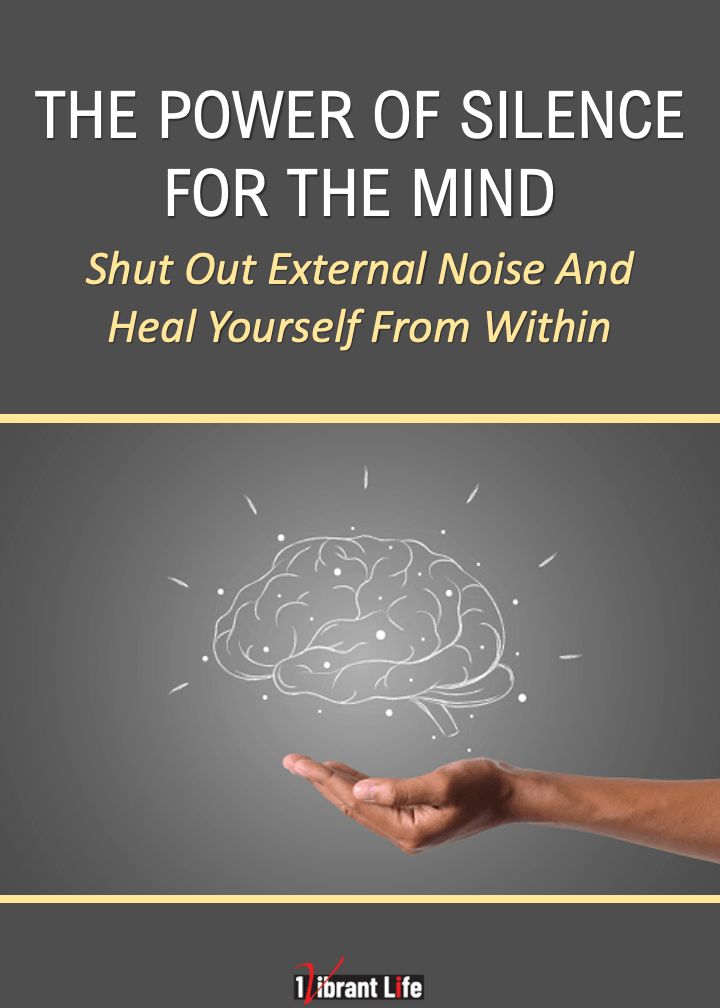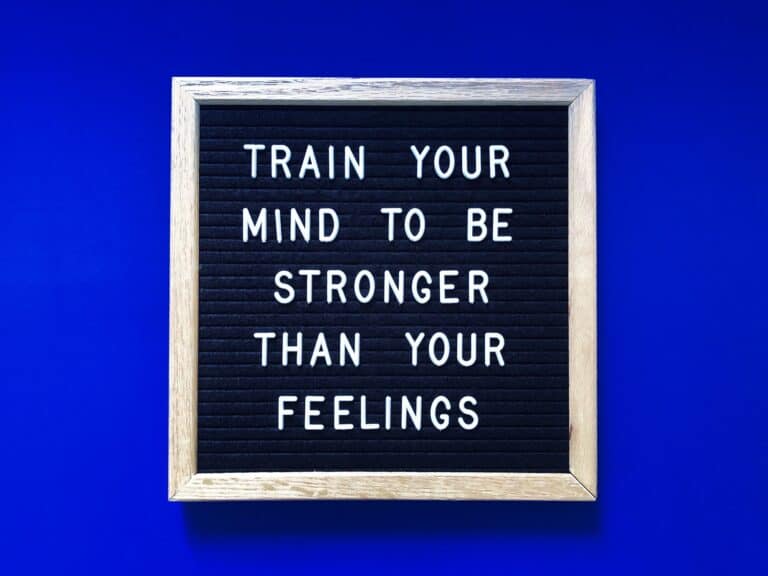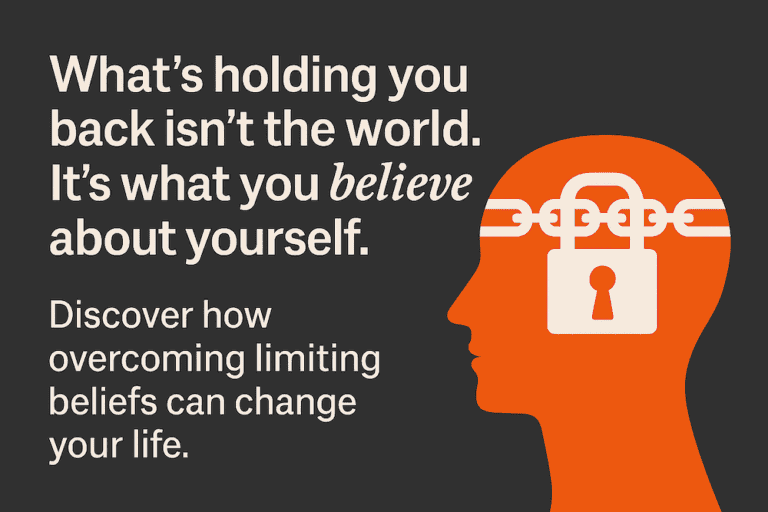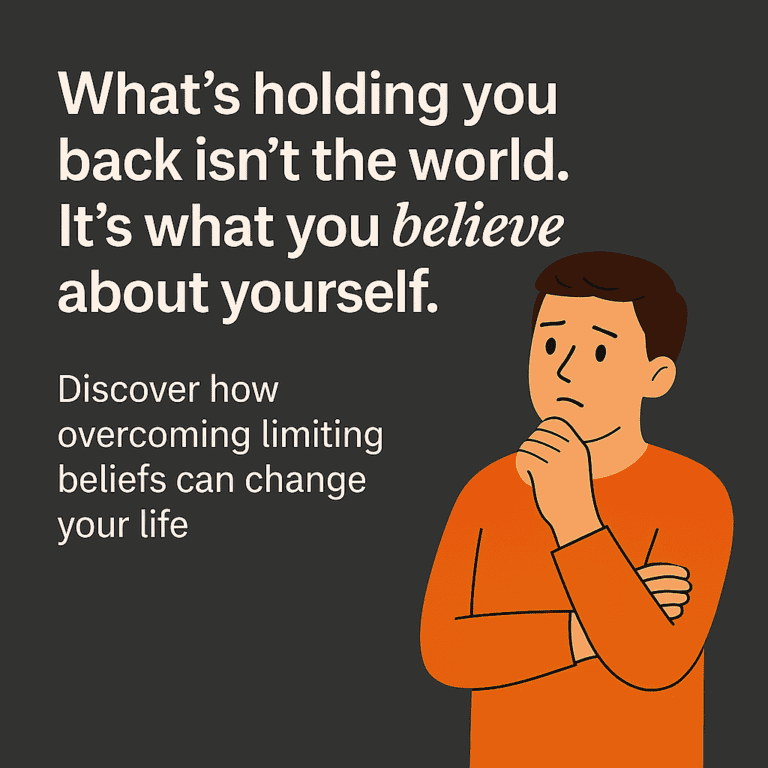How to Challenge Negative Thinking And Extinguish The Damage
To challenge negative thinking, you need to 1. Recognize a negative thought when it happens. 2. Stop and consciously examine the negative thought regarding its truth or reality. 3. Counter, reframe and replace that negative thought with a factually based, empowering, positive thought about yourself.

“All we are is the result of all we have thought.” ~ Buddha
Martin Ward | April 1, 2022
How To Challenge Negative Thinking
Learning and understanding where negative thoughts originate when challenging negative thinking can be beneficial. Doing this will help you navigate through them and deal more effectively with negative thoughts and beliefs.
Negative thinking or negative thoughts, or unhelpful thoughts, stem from your belief system, also referred to as core beliefs.
It’s important to say that the whole topic of beliefs, core beliefs, and core limiting beliefs, or simply limiting beliefs, can quickly get wordy and confusing.
The process of challenging negative thoughts or beliefs is not rocket science to understand or implement. It does, however, take some dedication and work.
Cognitive-behavioral therapy, or CBT, was developed in the 1950s by Aaron Beck and deals directly with recognizing and reframing negative thoughts and beliefs.
The significant difference between CBT and simply challenging one’s negative thinking is that CBT deals with several different thought patterns that people can unconsciously give way to.
However, challenging negative thinking can be a relatively simple and effective process for anyone to try and develop for themselves.
It is recognizing and countering a negative thought instead of accepting it as accurate.
Seems simple enough, right? Yes, but it takes determination to accomplish positive long-term results.

eBook

Audio eBook

eBook
Three personal growth tools for you as a gift for visiting 1VibrantLife.com
“There is little difference in people, but that little difference makes a big difference. The little difference is attitude. The big difference is whether it is positive or negative.” ~ W. Clement Stone
Using CBT To Remove Debilitating Negative Thinking
I was very fortunate to have been directed by a therapist that I worked with long ago to use CBT to regain my mental footing through a challenging time after having suffered traumatic head trauma in a car accident back in 1984.
Since my personal experience with CBT was so beneficial to me, I’ve always wanted to learn more, so I’ve taken an extensive course on CBT which allowed me to receive a practitioner certification. CBTCP Certification (Cognitive Behavioral Therapy Certified Practitioner)
I want to clarify that it is not a degree in CBT. It’s a certification of understanding and course completion, similar to most life coaching certificates offered today for those interested in furthering educational opportunities.
I find the process of reframing and challenging negative thoughts I may have when they occur, to be incredibly empowering for me.
Beginning a process of pushing back and countering negative thoughts can have significant and transformative initial results. One must maintain awareness of these disempowering thoughts as they pop up in the mind and actively remove or replace them.
“The most common way people give up their power is by thinking they don’t have any.”
~ Alice Walker
The Negative Thought Cycle As Life Events Change
I seemed to be caught up in a negative thought cycle back in 1984 after my accident, and I was unaware of it and certainly unaware of what to do about it.
As negative thinking is accelerated during the stress associated with significant changes, it’s easy to get overrun with unhelpful negative thinking.
The topic of the negative thought cycle was highlighted in an article by High Focus Centers, Feb 18, 2020, What is Cognitive Defusion?:
“When we’re stuck in a negative thought cycle, it’s difficult to clearly see the bigger picture and identify our thoughts or how they are affecting us. Once you’ve allowed your mind to pull away from and identify the negative thoughts, you can begin to reframe them in a positive way.”
Since my first exposure to CBT and learning to understand and overcome my limiting thoughts and beliefs, I’ve become a more well-rounded and happier individual.
Challenging negative thinking is a reasonably straightforward process to learn.
It can be confusing when searching for an explanation of negative thinking, core beliefs, core limiting beliefs, or limiting beliefs.
It can become somewhat wordy and confusing.
However, by getting an idea of where your negative thinking comes from, you can better understand why these thoughts have kept running like a loop in your mind forever.
“The greatest discovery of all time is that a person can change his future by merely changing his attitude.” ~ Oprah Winfrey

How To Challenge Automatic Negative Thoughts
Thinking and negative thinking go hand in hand, and though you may recognize negative thoughts when they occur to you, like most people, you will ignore them.
It is a real challenge to recognize negative thinking and take action to overcome or counter them. But Negative internal thoughts have been going on for eons.
From the Abstract for the article (1986). The internal dialogue: On the asymmetry between positive and negative coping thoughts, Robert M. Schwartz posited:
“The concept of the internal dialogue—and specifically the fundamental polarity between positive and negative thoughts—has historical antecedents from Plato to William James.
No matter what you may read or hear, this process of challenging your negative thinking or overcoming them is not something that necessarily requires a therapist to accomplish.
However, I would say that I would never have known about CBT, negative thinking, or what was holding me back and going on in my mind before I sought out a therapist when I became overwhelmed by self-doubt and negative thinking.
Having stated that, we all deal with automatic negative thinking or negative thinking patterns during our lives.
The real problem is when negative thoughts or thinking become overwhelming, and one loses their perspective or objectivity.
How To Replace Negative Thoughts
You might hear of this reframing process related to mindfulness, which is the quality or state of being conscious or aware of something.
However, it is directly related to the conscious awareness of your repetitive negative self-talk.
The Process Of Challenging A Negative Thought
- Stopping or interrupting a negative thought that you are having at any given moment.
- Challenging that negative thought at that moment by investigating or thinking about that thought’s truth or its reality based on what you know to be true about yourself.
- Reframing or replacing that negative empowering thought with the one you know to be accurate and positive about yourself, the situation, or the event.
Once you learn and continue this process of pushing back against and reframing negative thinking repeatedly, it will become second nature for you.
That is the ultimate goal. It is being able to Challenge and replace a negative thought with an accurate and positive one almost unconsciously.
It is relatively simple, as you can see. When you begin to do this, you are on the path of replacing your disempowering thoughts.
You will realize how these harmful, debilitating thoughts have held you back in becoming a more confident, well-rounded, and happier person.
Again, as I’ve stated before, to overcome negative or unhelpful thoughts, you need to be constantly aware of and take action against those thoughts right when they occur.
You can’t simply become aware of negative thoughts one time and have them disappear forever. That’s not going to happen.
These harmful thoughts have been rooted deep in your core belief system for most of your life and have limited your ability to be your best self.
Right up until this moment in time and beyond.
“The positive thinker sees the invisible, feels the intangible, and achieves the impossible.”
~ Winston Churchill

What Does It Mean To Challenge Negative Thinking?
In our daily lives, we all find ourselves in situations where we might react internally or become triggered when we have a negative thought that needs to be challenged.
For example, let’s say that you are sitting in the lunchroom at work all alone and a couple of your co-workers come in and sit way on the other side of the room.
Your automatic negative self-talk starts in.
Why are they not sitting with me?
What have I done to make them not like me?
This situation, or event, is a classic problem for people with negative thinking and limiting beliefs.
There could be many reasons that have absolutely nothing to do with you why they sat on the other side of the room.
And the facts would probably show that it has nothing to do with you.
In challenging this negative thinking, you need to react with a countering or reframing thought process.
Examples of how to challenge negative thinking:
- They may need to discuss business issues that don’t involve me, and they need some privacy.
- One of them may be having a hard time with a personal or work-related issue that they need to discuss.
- They may be having a pre-arranged meeting that they set up to talk about a work project.
- They may not want my input, and that is fine with me. I’m enjoying my nice cup of coffee.
- It’s none of my business, and it has no reflection on me, my self-worth, or my life.
You can see how confronting and challenging your negative thinking is not that hard to imagine doing.
“Don’t be pushed around by the fears in your mind. Be led by the dreams in your heart.”
~ Roy T. Bennet
What are negative thoughts examples?
It is maintaining the effort to continually counter and reframe negative thoughts to ease or remove what can often be debilitating, demeaning, and upsetting negative thinking patterns.
Here are some common examples of negative thinking, thoughts, and limiting beliefs.
I’m not good enough, I’m too old, I’m not good-looking enough, I need permission, I need more money, I don’t have the time, I don’t have the energy, I need somebody to help me, I’m not smart enough, I need more education, I don’t deserve love, I’m not good at relationships, All the good ones are gone, I’m not going to settle, I’m scared of getting hurt, I don’t have what it takes, I couldn’t do that, I don’t have the talent,
There is also a multitude of negative biased thinking and thoughts one can be experiencing that are equally harmful and debilitating thoughts that hold someone back from being their very best.
Example:
Those people are bad, I can’t stand that part of the country, I don’t like that person, That religion is wrong, I don’t like those kinds of parents, I have anxiety around animals, etc.
Let’s look more closely at one to get a better idea of how thoughts, also limiting beliefs, can be highly restrictive and most often incorrect.
That religion is wrong.
Examining The Facts – There are 4,000 different forms of religion globally.
Most of the world’s population believes in one of just five. Buddhism, Christianity, Hinduism, Islam, Judaism.
Now, which one of those is wrong?
One of them or none of them may be right or wrong in how you or someone else might believe in your particular chosen religion.
Of course, and it’s important to point out, any religion with any faction or group within it with an explicit ideology that would involve harming anyone else who is not of their particular faith or religious belief is always inherently wrong.
Catholics and Protestants fought in the 17th century, and Islamic sects have been at war since the 7th century. Religious conflict has never proven to be a solution to getting along.
But wrong? I don’t think the thought; that religion is wrong could be proven true. This thought is more likely related to a religious bias derived from a core limiting belief.
You can see how a blanket thought can leave someone with a very restrictive mindset.
“The only place where your dream becomes impossible is in your own thinking.”
~ Robert H Schuller
Everyday Harmful Automatic Negative Thoughts.
The typical types of negative thinking or negative thoughts that most people experience and are the focus of this post should not allow us to ignore those negative thoughts that are potentially harmful and dangerous to oneself or someone else.
Any negative thought that one might have that could be harmful or dangerous to themselves or others requires immediate consultation with a mental health professional.
Negative thinking can become overwhelming. And there is always someone available who can help overcome significant emotional distress.
Anyone feeling this way should be encouraged to reach out to a mental health professional. People are there for you and want to help.
Conclusion
Most negative, unhelpful thinking can be debunked or disproven if one were to investigate the facts and the reality of those thoughts.
Don’t feel dejected if you think you are unique in that you have these kinds of unhelpful thoughts all the time.
That’s a disprovable thought, and I’m sure because I know that you are not alone.
I, too, had significant negative thinking going on at one time that was debilitating for me and that I had to work through.
Most everyone has disempowering thoughts rolling around in their heads for most of, if not their entire, lifetimes.
Those who choose to learn to overcome their disempowering negative thoughts and replace them with more productive, fulfilling, empowering thoughts are those that become more than they thought they could be.
You can do this!
“Each morning when I open my eyes I say to myself: I, not events, have the power to make me happy or unhappy today. I can choose which it shall be. Yesterday is dead, tomorrow hasn’t arrived yet. I have just one day, today, and I’m going to be happy in it.”
~ Groucho Marx

My Name is Marty Ward and I’m the creator and publisher of the 1-Vibrant-Life blog.
On March 8th, 1984, I sustained a traumatic brain injury in a car accident while I was driving to my day job.
At the time of the accident, I was having a fairly successful life as a musician in Chicago, which had included a recent appearance on Star Search 84′ with Ed McMahon and preparing to be included in the group’s major independent recording contract.
However, after my accident, I was unable to perform or play my instrument. I was out of work and I had lost all confidence in myself and my abilities, felt lost and with no direction.
My injury and my recovery led me down a path of self-improvement, and self-discovery which gave me my life back filled with many amazing experiences and a newfound sense of hope. Learn more about my story on the 1-vibrant-life about page.
CBTCP Certification (Cognitive Behavioral Therapy Certified Practitioner) | 10-16-2021 Certification From The Academy of Modern Applied Psychology, in The Transformative Science of Cognitive Behavioral Therapy, CBT



